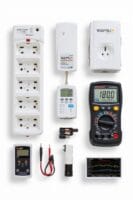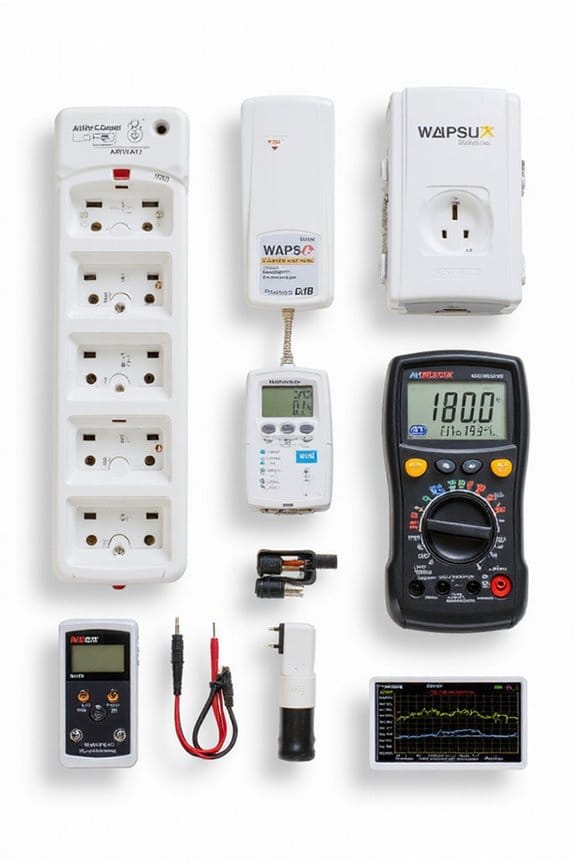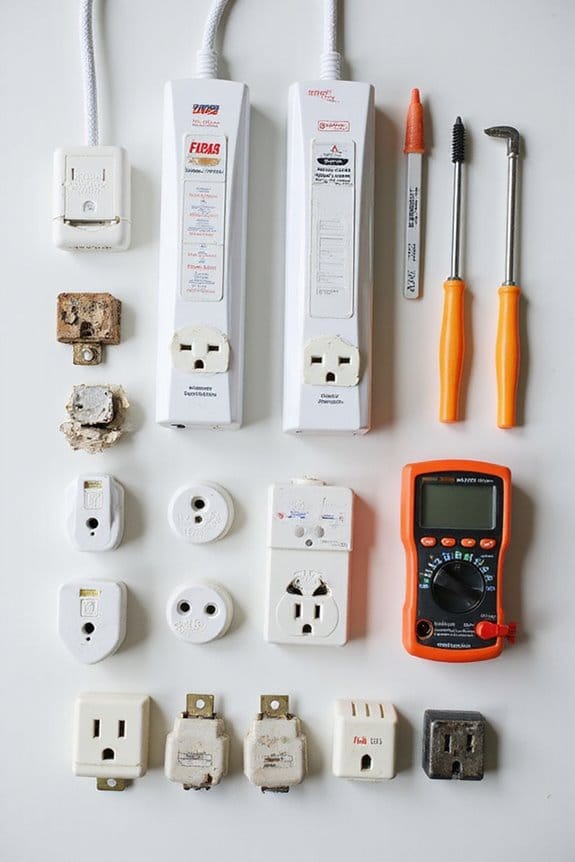Let-through voltage rating is the maximum voltage a surge protector allows during a transient surge event. Fundamentally, it’s a life-saver for sensitive equipment, like medical devices, which can’t handle more than 1,500 volts. Here’s the catch: lower ratings mean better protection. So, if you want to keep your electronics safe, look for protectors with the lowest let-through voltage possible. Stick around, and I’ll share how to choose the right surge protector for your needs!
Key Takeaways
- Let-through voltage rating, or clamping voltage, is the maximum voltage allowed during a transient surge event.
- Lower let-through voltage ratings signify better protection for electronic devices against voltage spikes.
- Sensitive equipment typically requires a let-through voltage below 1,500 volts to avoid damage.
- Measurement standards like ANSI/IEEE C62.41 and UL 1449 establish let-through voltage ratings for surge protectors.
- Maintaining low let-through voltage is essential for operational reliability and minimizing equipment failures.
Definition of Let-through Voltage Rating
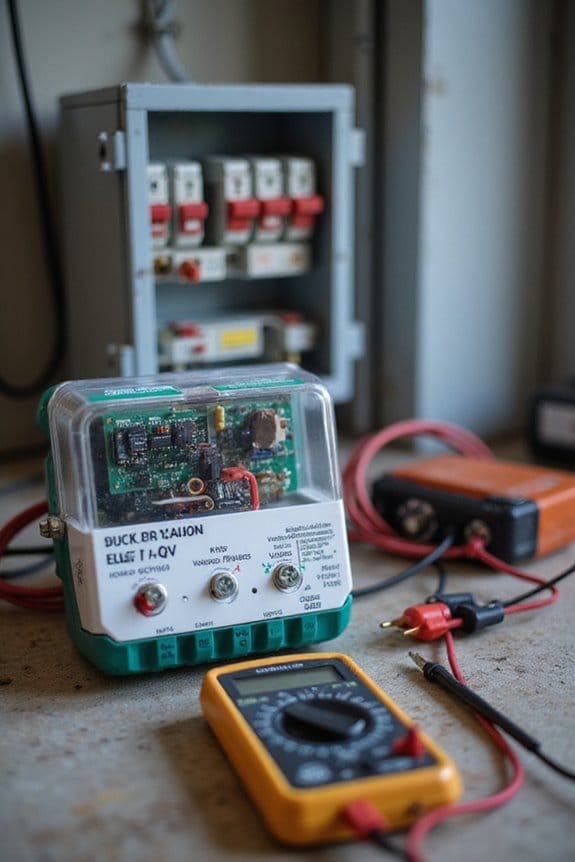
When we talk about let-through voltage rating, think of it as the gatekeeper for your electronics. This rating, also known as clamping voltage, tells us the maximum voltage a surge protector will allow through during a transient surge event. Here’s why it matters:
- Surge Protector Effectiveness: A lower let-through voltage means better protection. It allows less harmful voltage to reach your devices.
- Let Through Voltage Implications: If the rating is high, your equipment’s at greater risk of damage from voltage spikes, which can soar up to 6,000 volts!
Characteristics of Transient Voltages
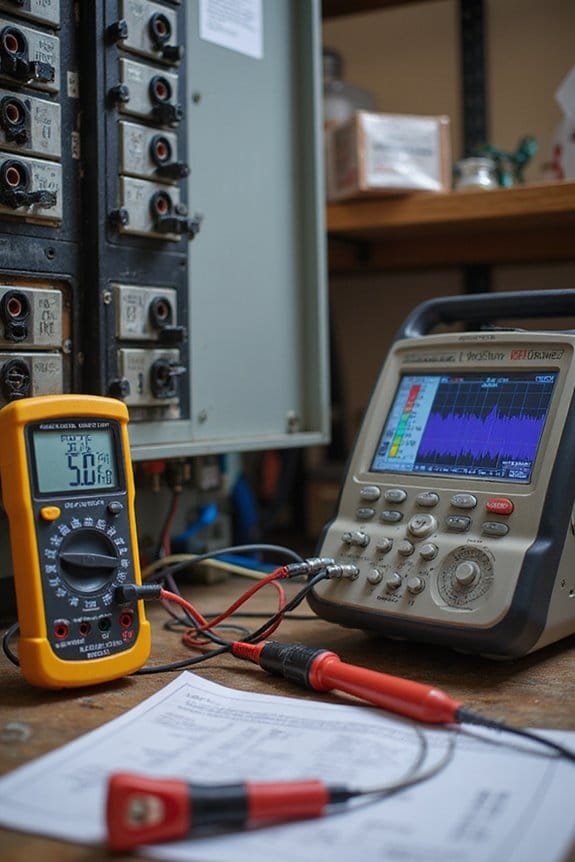
Transient voltages can be a bit sneaky, popping up when you least expect them. These temporary voltage spikes come from various voltage sources, like load switching or lightning. Here are some key transient characteristics to keep in mind:
- Waveforms: You’ll see oscillatory transients with multiple swings and impulse transients that spike once.
- Rise Time: This is how quickly a voltage increases, often in nanoseconds to milliseconds.
- Duration: It measures how long a transient lasts, affecting its impact.
The Function of Let-through Voltage
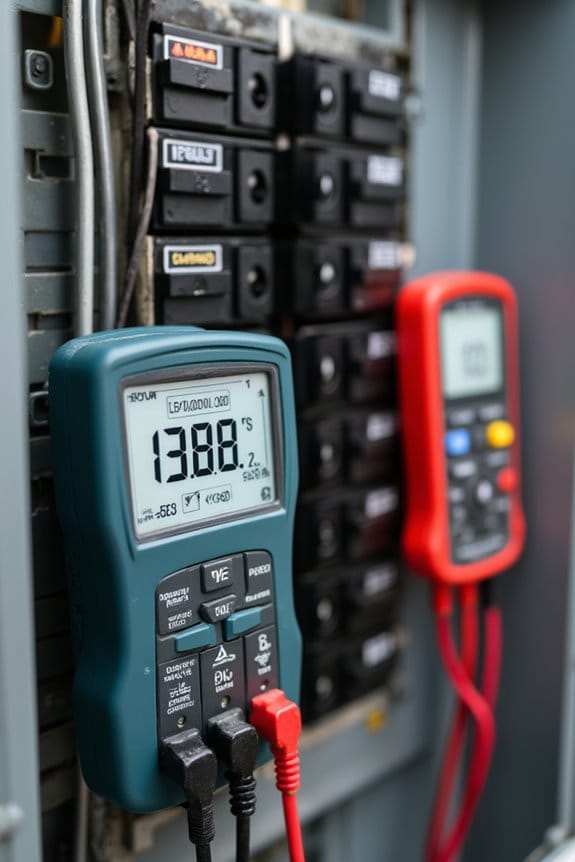
Understanding how let-through voltage functions is key to protecting your equipment from those sneaky transient voltages we just discussed. Here’s what you need to know:
- Surge Waveform Impact: Let-through voltage determines how much surge voltage sneaks through to your gear. Lower ratings mean less risk of damage.
- Equipment Compatibility: Sensitive devices, like medical equipment, need let-through voltage below 1,500 volts to stay safe.
- System Reliability: High let-through voltage can lead to errors and failures in your systems. Trust me, you don’t want to deal with that!
Maintaining a low let-through voltage isn’t just smart; it’s essential for keeping everything running smoothly. So, invest wisely in your surge protection devices! Your equipment will thank you.
Measurement Standards for Let-through Voltage
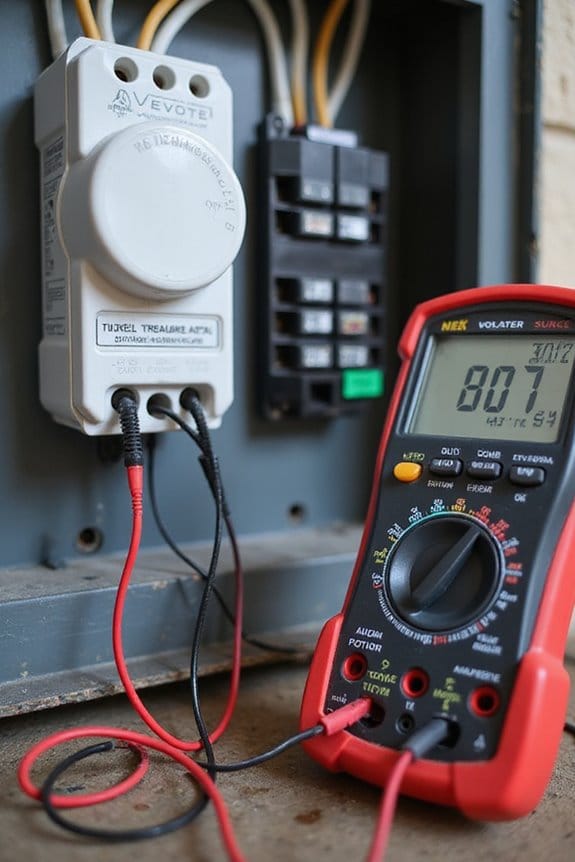
While it might seem a bit technical, measuring let-through voltage is essential for ensuring your devices remain protected from harmful surges. Here’s a quick rundown of the measurement standards:
- ANSI/IEEE C62.41: This standard defines waveform measurement categories (A, B, C) that simulate real-world surge conditions. Each category corresponds to specific environments and surge severity.
- UL 1449 Ratings: This sets voltage let-through ratings for surge protectors, typically at levels like 330, 400, or 600 volts. Lower ratings indicate better protection!
- Testing Conditions: Controlled surge currents and standardized lead lengths help achieve consistent results. Remember, comparing let-through voltages across different devices can be tricky, so keep an eye on those testing conditions!
Importance in Modern Electronics
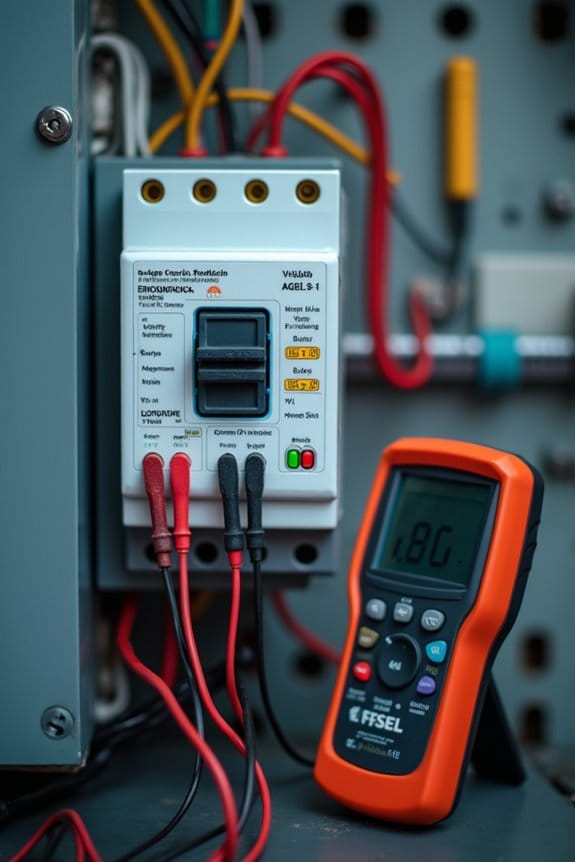
As we explore the importance of let-through voltage ratings in modern electronics, it’s imperative to recognize their role in safeguarding our devices. Here are a few key points:
- Equipment Protection: Let-through voltage ratings show how much transient voltage can pass through surge protectors. Lower ratings mean better protection, reducing costly equipment failures.
- Voltage Tolerance: Many devices can only handle certain voltage levels. For example, medical equipment might max out at 1,500 volts. Choosing devices with low let-through ratings helps avoid damage.
- Power Quality: A low let-through voltage contributes to cleaner power, minimizing interference. This is essential for high-reliability applications.
In short, understanding let-through ratings is critical. They help us assess the impact on our devices and guarantee we stay within safe voltage tolerances.
Practical Applications of Let-through Voltage Ratings
Let’s explore the practical applications of let-through voltage ratings, because they play an important role across various fields. Here are a few key areas where these ratings shine:
- Medical Imaging: Medical equipment needs protection from transient voltages, ideally keeping them below 1,500 volts. Surge protectors with low let-through ratings guarantee that medical imaging devices remain safe and operational.
- Industrial Electronics: In industrial settings, lower let-through voltages enhance equipment longevity. By limiting transient peaks, these ratings help avoid costly downtime from equipment failures.
- Consumer Electronics: Even at home, let-through voltage ratings matter. They protect our TVs and computers from sudden voltage spikes, providing peace of mind.
In a nutshell, let-through voltage ratings are vital for safety, reliability, and performance across various applications!
Selecting Surge Protectors Based on Let-through Voltage
Choosing the right surge protector can feel a bit like maneuvering through a maze, especially when you start looking at let-through voltage ratings. Here’s a simple guide to help you select the best surge protector types for your needs:
- Know Your Equipment: If you’ve got sensitive devices like computers, aim for a let-through voltage under 400 volts.
- Check the Ratings: Look for surge protectors with lower let-through voltage ratings for better protection.
- Consider Joule Ratings: A joule rating above 1,000 is ideal for critical equipment.
Regular Assessment of Surge Protection Devices
When it comes to guaranteeing the longevity and effectiveness of surge protection devices (SPDs), regular assessments are vital. I recommend conducting inspections at least every five years or right after a lightning strike. This inspection frequency keeps your SPDs in top shape!
- Get Certified Help: Always have certified electricians perform and document the inspections to meet electrical codes.
- Check for Damage: Look for signs like cracks or discoloration—these can be bad news.
- Document Everything: Keep detailed records of findings and repairs. This documentation practice is essential for audits and insurance claims.
Trust me, consistent inspections can save you from unexpected failures and guarantee your equipment stays protected!
Frequently Asked Questions
How Does Let-Through Voltage Affect Surge Protector Lifespan?
I’ve noticed that let-through voltage greatly impacts surge protector longevity. Higher let-through voltages can exceed voltage tolerance, leading to faster wear and reduced lifespan, while lower values help maintain durability and protection for connected devices.
Can Let-Through Voltage Ratings Vary by Manufacturer?
Isn’t it curious how manufacturer comparisons can reveal stark differences in voltage specifications? Yes, let-through voltage ratings can indeed vary by manufacturer, affecting protection levels and device safety. Choosing wisely can make all the difference.
What Happens if Let-Through Voltage Is Exceeded?
If let-through voltage is exceeded, I’ve seen serious implications for surge protection. Devices can fail, leading to data loss or damage. It’s essential to choose surge protectors wisely to avoid costly consequences.
Are There Specific Standards for Let-Through Voltage in Different Industries?
Oh sure, let-through specifications vary like fashion trends! Industry standards dictate everything, from medical gear needing superhero levels of protection to residential devices just wanting a cozy voltage blanket. Who knew surge protectors had such diverse wardrobes?
How Can I Test My Surge Protector’s Let-Through Voltage?
To test my surge protector’s let-through voltage, I conduct surge testing using a combination wave generator. I then use voltage measurement tools like an oscilloscope to capture and analyze the voltage on the load side.


